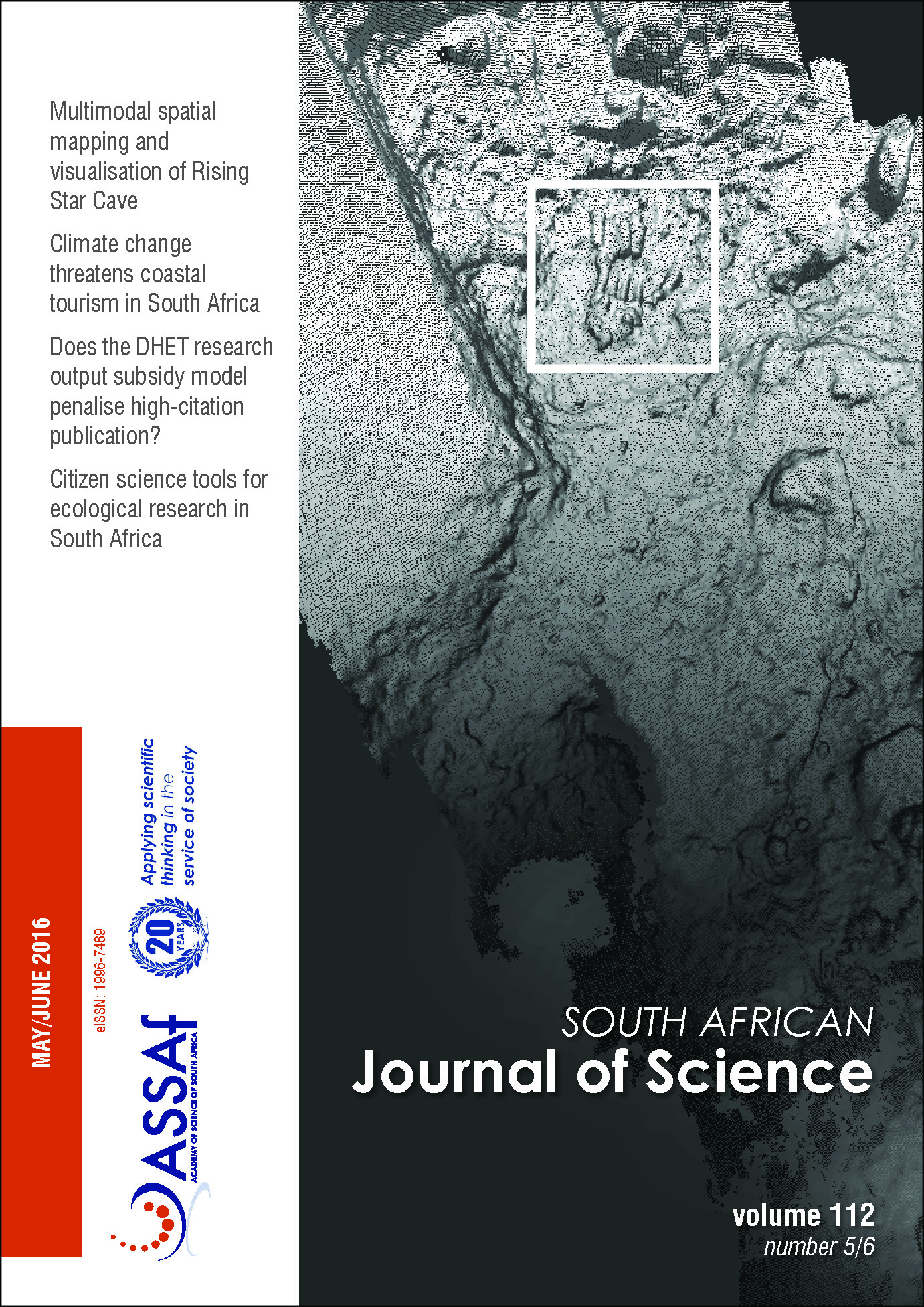Climate change threats to two low-lying South African coastal towns: Risks and perceptions
DOI:
https://doi.org/10.17159/sajs.2016/20150262Keywords:
digital elevation model, perceptions, tourism, tourism climate indexAbstract
Climate change poses a considerable threat to low-lying coastal towns. Possible risks include flooding induced by sea-level rise, increased discomfort from changes in temperature and precipitation, more frequent extreme events, biodiversity shifts, and water shortages. For coastal towns that attract many tourists, these threats can have far-reaching economic effects and may compromise the continued viability of the tourism sector. A growing number of studies are being published on the inter-relationship between climate change and tourism in the global North. As yet, little equivalent research has been conducted in developing countries with economically significant tourism sectors. This paper presents a mixed-method pilot study on two adjacent coastal towns, St Francis Bay and Cape St Francis, in the Eastern Cape Province of South Africa. We explored the climate change threats in this region, and perceptions of these threats within the tourism sector. The tourism climate index results showed that the towns are climatically well suited to tourism, but a decrease in these index scores between 1978 and 2014 suggests that climate change experienced in recent decades has detrimentally affected tourist comfort. A digital elevation model sea-level projection for the towns indicated a high risk of sea-level induced flooding by 2050, particularly for properties along the coastline. Interviews with tourism establishment respondents showed that people are aware of climate change threats, yet little adaptation is forthcoming. Rather the government is deemed responsible for adaptation, despite its limited capacity. A disjuncture therefore exists between the perceived severity of risk and the risk that is evident from scientific analyses. This gap results in poor planning for the costs associated with adaptation.
Published
Issue
Section
License

This work is licensed under a Creative Commons Attribution 4.0 International License.

All articles are published under a Creative Commons Attribution 4.0 International Licence
Copyright is retained by the authors. Readers are welcome to reproduce, share and adapt the content without permission provided the source is attributed.
Disclaimer: The publisher and editors accept no responsibility for statements made by the authors
How to Cite
- Abstract 1409
- PDF 1864
- EPUB 204
- XML 220













.png)